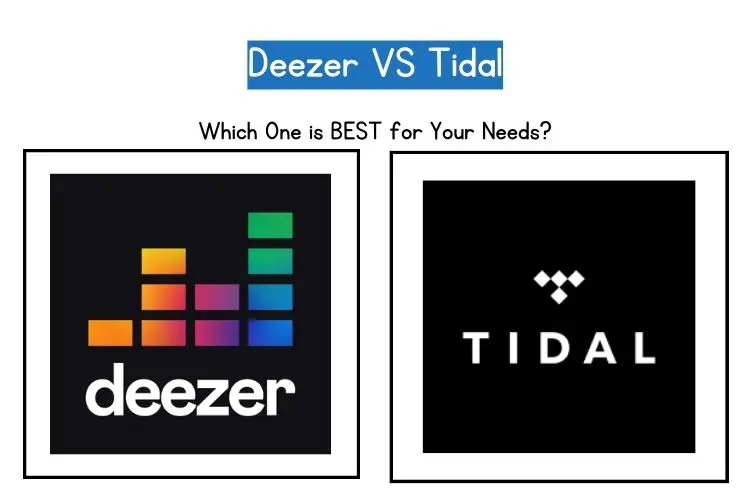Technology has played quite a significant role in changing how music is distributed and consumed. Although we are not totally done with the days of cassette, vinyl and CDs, it is still a fact that music streaming has taken over the music industry.
Unarguably, music streaming has become the most widely used and accepted way of consuming and distributing music. Ever since the premiere of Napster, the way we consume music was revolutionized.
As a result, a multi-billion dollar industry was birthed. Research has shown that the global music streaming market grew from about $27.29 billion in 2022 to about $30.99 billion in 2023. That is a compound annual growth rate (CAGR) of approximately 13.5%.
The reason for the massive adoption, acceptance and consequential growth of music streaming is not hard to decipher. Music streaming came with a lot of advantages over the previous mediums of music consumption like CDs, vinyl and our dearly beloved “live shows.”
Easy accessibility, superior audio quality, storage space conservation, more control over playlists and songs, better and more advanced artist discovery, and a lot of other advantages make streaming a lot more attractive to both musicians and music consumers.
Today, Napster might not really be “the thing” for many people, but that doesn’t mean that music streaming is declining. There are several other streaming platforms available; this only helps make streaming a lot easier, more accessible, and a lot more fun.
Two of those platforms are Deezer and Tidal. These two platforms are generally popular and widely accepted by different and unique demographics. However, many have been wondering what the differences are between these two and which is better between the two.
One major difference is that Tidal offers generally better and superior audio quality and more diverse content when compared to Deezer. However, Deezer is available in a lot more countries when compared to Tidal.
Table of Contents
All About Deezer
Deezer is a popular music streaming website with many songs, albums, and playlists from various artists and genres. Daniel Marhely created the first version of Blogmusik in 2006.
In April 2007, SACEM shut down the platform due to copyright violation. After agreeing with SACEM, Deezer debuted in August 2007 as “Deezer.”
Deezer shared advertising money with SACEM to reimburse copyright holders. Deezer also offered iTunes purchases of streamed tracks, receiving a commission.
Deezer’s early repertoire was restricted since they had not signed deals with major music companies.
However, the platform worked hard over the years to strike arrangements with major and smaller labels, increasing the number of songs available. The site added eight million songs by 2011.
Deezer struggled financially despite rising popularity. The company’s music licensing expenses exceeded its income in 2008. To fix this, Deezer started running ads to make more money.
In October 2008, Deezer received money from AGF Private Equity and CM-CIC Capital Prive to strengthen its finances and extend its platform.
Deezer established membership tiers in 2009 to accommodate user choices. Paid customers had better audio and could download apps for desktops and phones. This increased premium service customers and diversified the platform’s revenue.
Deezer succeeded CEO and co-founder Jonathan Benassaya in January 2010. Orange’s strategic cooperation advanced the platform. This partnership enhanced Deezer’s premium subscriptions, income, and market share.
Deezer’s ambitious global expansion goal. Users worldwide may access the service in many European countries, the Americas, Asia, and Africa. The platform expanded internationally after receiving major funding in 2012.
Deezer has always innovated. Deezer partnered with Samsung and Bose to give free subscriptions to their customers, expanding its user base.
Deezer’s clever caching function lets the app remember a user’s most-played tunes even in places with weak network connections. Subscribers enjoyed continuous music listening. Deezer went public in 2022.
This helped the site expand and strengthen its music streaming position. Deezer launched a groundbreaking AI tool in June 2023 to recognize and label music using artificially created vocal duplicates.
This ingenious program addressed copyright infringements to protect legitimate artists’ earnings. Deezer’s rise from its tumultuous early years to a global music streaming powerhouse shows its determination to overcome obstacles.
It also shows its dedication to providing a diverse and extensive music library, and its pursuit of innovation to improve user experience and support artists’ rights.
All About Tidal
In 2014, a Swedish company called Aspiro launched Tidal, an American and Norwegian music streaming service. Block, Inc., based in the US and offers payment handling services, owns most of it.
Tidal has two levels of service: Tidal HiFi, which has audio with CD quality, and Tidal HiFi Plus, which has audio with MQA quality. It lets you listen to over 80 million songs and watch over 350 thousand music videos.
Tidal was first chastised and the subject of heated controversy. Some people liked that artists owned the service and that the audio quality was good, but others thought that the registration costs needed to be lowered and that the service’s unique content might encourage theft.
Tidal has distribution deals with small and big record labels to market itself as a platform that gives artists and songwriters a bigger share of royalties in the music streaming market.
The first streaming service run by musicians, according to Tidal’s 2015 launch, Jay-Z, Beyoncé, Kanye West, and other well-known artists are the owners of Tidal.
There have also been claims that play counts were changed on purpose, financial disputes, and problems with streaming statistics on the site.
Exclusive releases and live shows were added to the service’s growing list of options. It also worked with Master Quality Authentication (MQA) so that its HiFi customers could get recordings that were of master quality.
On the other hand, independent tests have cast doubt on MQA’s claims about the quality of the sound, possibly pointing to compression and distortion.
Even though it had some problems at first, Tidal is still a well-known music streaming service that works in 61 countries.
Deezer vs. Tidal
Although Deezer and Tidal are well-known music streaming services with millions of tracks available, they differ in certain ways. Here is a contrast between the two:
Deezer vs Tidal: Audio Quality
Tidal offers alternatives like HiFi Plus, which contains Master Quality Audio, Dolby Atmos, and Sony 360 Reality Audio, which have superior sound quality.
| AUDIO QUALITY | DEEZER | TIDAL |
| MP3-128kbps | Available | N/Available |
| MP3-320kbps | Available | N/Available |
| FLAC – 16 bit 1,411 kbps | Available | Available |
| AAC – 160 kbps | N/Available | Available |
| FLAC-16bit 44.1khz | N/Available | Available |
| MQA – 24 bit, 96kHz | N/Available | Available |
Although Deezer’s HiFi CD quality has been improved to 1411kbps, it still needs to catch up to Tidal’s sound quality alternatives.
Deezer vs Tidal: Premium Plans and Cost
Deezer offers a variety of pricing levels, including a free option. Deezer Premium is about $10.99 monthly, with an option of annual payments that is 25% off every year for $98.91/year, while Deezer Family is about $17.99 monthly.
Tidal has a free plan for all music fans. Other than that, they provide a student plan that has a 50% discount, and every new signup will get a 30-day free trial before the discounted rate takes effect.
The monthly price for Tidal Hifi is $9.99, and you also get a 30-day free trial, Tidal HiFi Plus, which offers lossless content, is $19.99. You also get a 30-day free trial for the plan. Tidal has other monthly subscription plans, such as the Family Plan, which is $14.99.
The Military plan, that’s 40%, is only active in the US and is meant for those who have served or are serving in the US military. First Responders plan has a 40% discount on subscriptions to all active EMTs, EMS, Police Officers and Firefighters. This plan is also only available in the US.
Deezer vs Tidal: Music Library
While Deezer offers 90 million tracks and playlists but no videos, Tidal promises over 100 million songs and 650,000 music videos.
Deezer vs Tidal: Device Compatibility
Tidal is compatible with several platforms, including connected Hi-Fi devices, TV apps, Apple CarPlay, desktop software, and mobile clients. Deezer supports a variety of hardware and software platforms, too.
Deezer vs Tidal: Available Countries
Deezer is more broadly accessible as it is offered in 188 countries. Although Tidal currently operates in 61 nations, it has hopes to grow much more.
Deezer vs Tidal: Music Discovery
Music discovery elements are available on both platforms, including personalized suggestions based on user tastes and playlists that have been carefully selected.
Deezer vs Tidal: User Interface
Deezer’s user interface is simple to use and includes a lyrics option. The “flow” feature of Tidal’s user interface allows users to find music according to their preferences and mood.
Deezer vs Tidal: How Much They Pay Artists
Tidal is renowned for paying out higher percentages to musicians, with some money going straight to them through the Direct Artist Payment program. Although Deezer and Tidal both employ the User-Centric Payment System (UCPS), Tidal pays significantly more to artists.
Below is a summary of Deever and Tidal features:
| FEATURE | DEEZER | TIDAL |
| Audio Quality | HIFI CD | HIFI Plus |
Premium Plan and cost | $99.99 per month | $9.99 per month |
| Music Tracks | 90 million tracks | Over 100 million tracks |
| Device Compatibility | Supports a variety of hardware and software platforms | Compatible with several platforms, including connected Hi-Fi devices, TV apps, Apple CarPlay, desktop software, and mobile clients. |
| Countries’ Available | 188 | 61 |
| Music Discovery | Personalized music suggestion | Personalized flow feature |
| User Interface | Has a friendly interface | Intuitive flow interface |
Pros and Cons of Deezer
| Pros | Cons |
| Supports MP3 uploads from your computer | Some songs on Deezer Free are only available as 30-second previews. |
| Has a SongCatcher feature | A separate 360 Reality Audio app is necessary. |
| Free version | The highest “HiFi” audio quality on these platforms is considered worse. |
| Clean, user-friendly layout | Podcasts, audiobooks, and radio are not widely available. |
| Accessible in over 180 countries | |
| Adequate discovery tools | |
| Massive music library | |
| Plenty of original, exclusive content | |
| Provide podcasts, audiobooks, and radio | |
| Allows song downloads for offline listening | |
| CD-quality audio at 1411 kbps |
Pros and Cons of Tidal
| Pros | Cons |
| • Excellent audio quality with Flac format @ 1,411kbps. | • Subscription price is considered pricey |
| • Exclusive stuff from well-known artists. | • There is no free version; only premium subscriptions are offered. |
| • Discover new music with crafted playlists and personalized suggestions. | • Limited availability in some countries necessitates the use of a VPN. |
| • Listening to downloaded content when offline. | • A lack of social aspects. |
| • Increased royalties for artists. | • Music library is incomplete, missing certain well-known artists and tunes. |
| • Behind-the-scenes footage and video content. | • Slow and occasionally unavailable technical support service. |
| • Family plans with reduced pricing. | |
| • Hi-Res Audio (MQA) for an even more immersive experience. | |
| • Compatibility with high-end audio equipment. |
What’s Better, Tidal or Deezer? – Verdict
Tidal may be the superior option for audiophiles who value high-resolution music and exclusive content and are willing to invest in a Hi-Fi subscription.
If a larger music library, automatic playlist creation with Deezer Flow, and a more affordable subscription plan are more essential to you, however, Deezer may be the better option.
The choice between Tidal and Deezer ultimately depends on your preferences, budget, and the features most important to you as a music lover. Both services offer free trials, allowing you to determine which one meets your needs and music-listening preferences best.
Why Bother About Streaming Platforms?
Given that streaming services have assimilated into how consumers consume entertainment, compelling arguments favour doing so. It is simpler to find new songs, movies, and TV episodes because of the readily available content.
Users get greater value for their money by paying for a streaming service because it is less expensive than buying physical media or individual digital downloads.
Personalization elements enhance the experience even more as streaming providers use algorithms to generate personalized playlists and recommendations based on user preferences.
Streaming services also assist viewers in finding new content by introducing them to up-and-coming artists, subgenres, and niche genres that might receive less attention through traditional media outlets.
Many platforms let you download content for offline enjoyment for those with little or no internet connectivity or who are on the go. Regular library improvements enable users to obtain current and well-liked content and keep up with the most recent publications.
By enabling users to connect with people who share their interests and share their favourite content, social sharing platforms promote connection.
Furthermore, streaming services eliminate national boundaries, enabling consumers from different nations to enjoy the same entertainment options and worldwide access to content.
These platforms are an essential and cherished part of modern entertainment consumption because they provide unrivalled comfort, personalized experiences, and a variety of entertainment possibilities.
Conclusion
Both popular music streaming services, Deezer and Tidal, have unique advantages. Your musical tastes and listening preferences will mostly influence your decision between Deezer and Tidal.
In the end, both Deezer and Tidal offer their distinctive features and advantages, so consumers should consider their particular demands and preferences when deciding between them.





